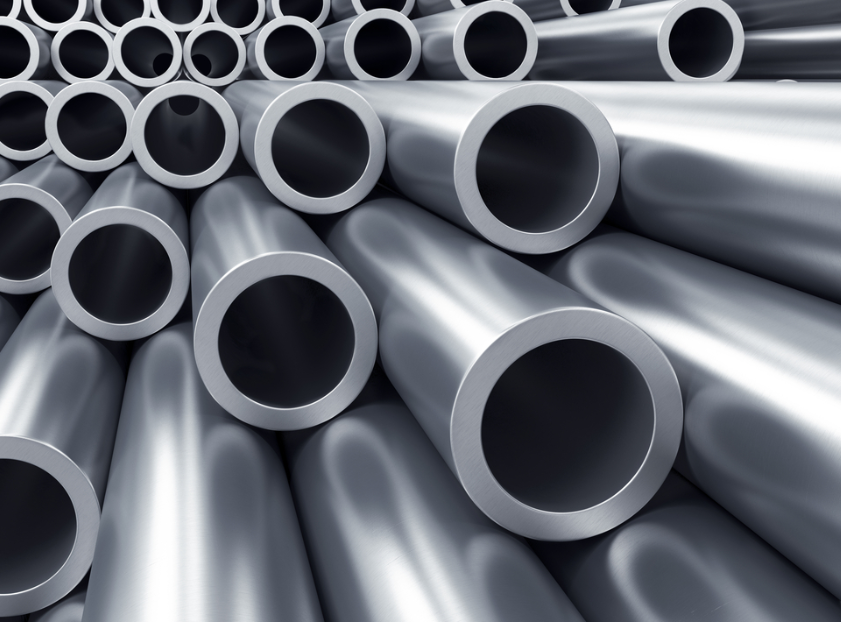What are low alloy steels?
Low alloy steels are categorized as such when their composition contains alloy elements like Ni, Cr, Mo, and others, but in quantities less than 10.5%. These steels typically include small additions of chrome and nickel, extending up to 11/13Cr steels with a nickel content of around 4%. These alloy additions enhance the performance of the steel at high temperatures and provide a certain level of corrosion resistance. By incorporating chrome and nickel, the thermal stability of the steel is improved, making it suitable for applications that experience wide temperature variations without excessive heat buildup. This characteristic has contributed to its popularity in various industries.
Fabricating and welding low alloy steel
Fabricating and welding low alloy steels can present various challenges. The weldability complexities are diverse and depend on the specific alloy composition and its intended application. Each alloy combination poses its own unique set of welding challenges, necessitating customized approaches for successful outcomes. In these situations, there is no one-size-fits-all approach. However, a common factor is the imperative need for comprehensive knowledge about the metallurgical structures of each grade and its modified versions. This knowledge must align with the specific requirements placed on the material following welding. An example of such steel is the one containing 9% chromium and molybdenum, commonly employed in industrial and heat exchanger constructions. To achieve a successful weld, a meticulously developed welding procedure, accompanied by well-defined heat control plans, is essential to prevent the formation of detrimental phases in the steel.
The Uses of Low Alloy Steel
Low-alloy steels find uses in a wide range of industries, including military vehicles, oil drilling platforms, pressure vessels and piping, earthmoving and construction equipment, as well as structural steel. These steels are grouped into various categories, starting with HY 80, HY 90, and HY 100 steels, which are commonly utilized for submarines, bridges, ship hulls, and off-highway vehicles. The inclusion of nickel, molybdenum, and chromium in these alloys enhances their weldability, yield strength, and notch toughness. Notably, when welding low-alloy steels, the need for preheat and post-heat treatments is typically eliminated, simplifying the welding process.
Explanations of Low Alloy Steel
Throughout the production process, most low-alloy steels undergo heat treatment, normalizing, and tempering, rendering them weldable. However, it is essential to subject the welds to heat treatment to prevent cracking.
The superiority of low-alloy steel over mild steel can be attributed to several key factors:
- High yield strength
- Ability to withstand high temperatures
- Impressive creep strength
- Resistance to oxidation
- Resilience against hydrogen damage
- Ductility at low temperatures
Since low-alloy steel is commonly employed in the fabrication of thin-walled pressure vessels, it necessitates a higher yield strength and creep strength. Specifically, low-alloy steels like 0.5 Mo and 12 CrMoVW are extensively used in steam boilers, crackers, and reformers found in refineries due to their superior resistance to creep compared to other steels. It is important to note that low-alloy steels should not be subjected to temperatures exceeding 600°C (1112°F).
Low Alloy steel (Cr – Mo Steel) grades and suitable welding consumables
| Steel category | ASTM / ASME standard | |||
|---|---|---|---|---|
| Low Alloy Steel Plate | Low Alloy Steel Pipe | SMAW Electrode/ Rod | Flux Cored Wires | |
| 0.5%Mo | A204 Grade A,B,C A336 Grade F1 | A209 Grade T1 A335 Grade P1 | GL76/78A1 | GMX 811A1 |
| 0.5%Cr-0.5%Mo | A387 Grade 2 CI.1,2 | A213 Grade T2 A335 Grade P2 | GL86/88B1 | |
| 1.25%Cr-0.5%Mo | A387 Grade 12 Cl.1,2 A387 Grade 11 CI.1,2 A336 Grade F11 | A213 Grade T11, 12 A335 Grade P11, 12 A182 Grade F11 | GL86/88B2 | GMX 811B2 |
| 2.25%Cr-1.0%Mo | A387 Grade 22 CI.1,2 A336 Grade F22 | A213 Grade T22 A335 Grade P22 A182 Grade F22 | GL86/88B3 | GMX 911B3 |
| 5.0%Cr-0.5%Mo | A387 Grade 5 CI.1,2 | A335 Grade P5 | GL86/88B6 | |
| 9.0%Cr-1.0%Mo | A387 Grade 9 CI.1,2 | A335 Grade P9 | GL86/88B8 | |
Read More:
Steel Alloys: Everything You Need to Know: If you’ve ever wondered what the most widely used metal on the planet is, you might be shocked (or unsurprised) to learn that it’s steel. Steel is a durable material that is commonly utilized. Steel is used in many of the objects that you and I encounter on a daily basis.
What’s the deal with the Flange Rating? : In the oil, gas, and petrochemical industries, it’s important to make sure that the flanges can handle the pressures and temperatures they’re put through. The size of the flanges is important, but the rating is also important. So, choosing a flange with the right rating makes sure it can handle the stresses of working at different temperatures.

